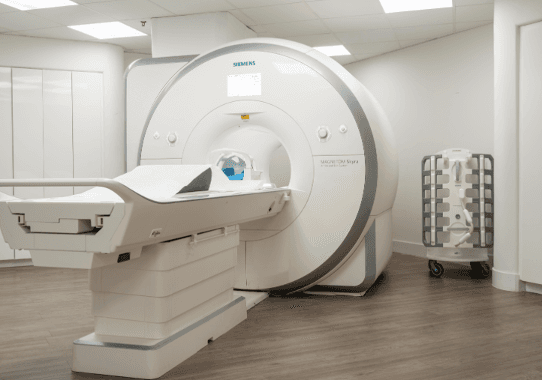Urinary Tract Infections (UTIs) are common infections that can affect any part of the urinary system, including the bladder, kidneys, ureters, and urethra. They are particularly frequent among women, with many experiencing recurring infections throughout their lives. Understanding the symptoms, causes, and treatment options is crucial for managing and preventing UTIs effectively.
Key Takeaways
- UTIs are infections in the urinary system, commonly caused by bacteria.
- Women are more likely to get UTIs, but men and children can also be affected.
- Symptoms include a strong urge to urinate, burning sensation during urination, and cloudy or bloody urine.
- Treatment typically involves antibiotics, but preventive measures like proper hygiene and staying hydrated are essential.
- Complications can arise if UTIs are left untreated, potentially affecting kidney health.
Understanding Urinary Tract Infections
What is a UTI?
A urinary tract infection (UTI) is an infection that can occur in any part of the urinary system, which includes the kidneys, ureters, bladder, and urethra. Most UTIs are caused by bacteria, but fungi and viruses can also be culprits. UTIs are among the most common infections, especially in women.
Parts of the Urinary System Affected
The urinary system is responsible for making and storing urine. It includes:
- Kidneys: Filter blood to remove waste and produce urine.
- Ureters: Tubes that carry urine from the kidneys to the bladder.
- Bladder: Stores urine until it is ready to be expelled.
- Urethra: Tube that carries urine from the bladder to the outside of the body.
Types of UTIs
UTIs can be classified based on the part of the urinary system they affect:
- Urethritis: Infection of the urethra.
- Cystitis: Infection of the bladder.
- Pyelonephritis: Infection of the kidneys.
UTIs are more common in women than men, with about 50% of women experiencing at least one UTI in their lifetime. Men and children can also get UTIs, though it is less common.
Recognizing the Symptoms of UTIs
Common Symptoms
Urinary tract infections (UTIs) can cause a variety of symptoms. Common signs include:
- A strong, persistent urge to urinate
- A burning sensation during urination
- Passing frequent, small amounts of urine
- Cloudy or strong-smelling urine
- Urine that appears red, pink, or cola-colored, indicating blood
- Pelvic pain in women, especially around the pubic bone
Symptoms in Men and Women
While many symptoms are similar, some can differ between men and women:
- Women: Pelvic pain, especially in the center of the pelvis and around the pubic bone
- Men: Rectal pain and discomfort
When to Seek Medical Attention
It's important to know when to see a doctor. Seek medical help if you experience:
- Severe pain in your back or side
- High fever, shaking, or chills
- Nausea or vomiting
- Symptoms that persist or worsen despite home treatment
If left untreated, UTIs can lead to more serious health issues, including kidney infections. Always consult a healthcare provider if you're unsure about your symptoms.
Causes and Risk Factors
Bacterial Causes
Most UTIs are caused by bacteria, with Escherichia coli (E. coli) being the most common culprit. These bacteria typically live in the intestines but can enter the urinary tract, leading to infection. Other bacteria, such as Staphylococcus saprophyticus, can also cause UTIs, though they are less common.
Risk Factors for Women and Men
Women are more prone to UTIs due to their shorter urethra, which allows bacteria to reach the bladder more easily. Factors that increase the risk for women include:
- Sexual activity
- Certain types of birth control, like diaphragms and spermicides
- Menopause, which causes changes in the urinary tract
- Pregnancy, which alters the urinary tract and hormone levels
Men are less likely to get UTIs, but the risk increases with age, especially after 50. Factors that increase the risk for men include:
- An enlarged prostate, which can block urine flow
- Anal intercourse
- Being uncircumcised
- Use of catheters
Other Contributing Factors
Several other factors can contribute to the risk of developing a UTI for both men and women:
- Urinary tract abnormalities: Structural issues can make it easier for bacteria to grow.
- Catheter use: Long-term use of catheters can introduce bacteria into the urinary tract.
- Suppressed immune system: Conditions like diabetes can weaken the body's ability to fight off infections.
- Recent urinary procedures: Surgeries or medical exams involving the urinary tract can increase the risk of infection.
UTIs are common, but understanding the causes and risk factors can help in taking preventive measures. Always consult a healthcare provider for proper diagnosis and treatment.
Diagnosis and Testing
Common Diagnostic Tests
To diagnose a UTI, healthcare providers often use several tests:
- Urinalysis: You will pee into a special cup. The sample is sent to a lab where technicians check for signs of infection, like nitrites, leukocyte esterase, and white blood cells.
- Urine Culture: This test helps identify the bacteria causing the infection. You will pee into a cup, and the sample is tested to grow and identify any bacteria.
- Ultrasound: This imaging test uses sound waves to create pictures of your internal organs. It is painless and requires no preparation.
- CT Scan: A more detailed imaging test that takes cross-section images of your body to create 3D pictures.
- Cystoscopy: A thin instrument with a lens and light is used to look inside your bladder through your urethra.
Interpreting Test Results
When examining your test results, doctors look for higher numbers of white blood cells in your urine, which can indicate an infection. Urine cultures are crucial as they help identify the specific bacteria or fungi causing the infection, guiding the choice of treatment.
When to Consult a Specialist
If your UTI doesn't respond to initial treatments, or if you have frequent infections, it may be time to see a specialist. They might perform additional tests to check for other health issues, such as diabetes or abnormalities in your urinary system.
Frequent UTIs can sometimes signal underlying health problems that need to be addressed to prevent future infections.
Treatment Options for UTIs
Antibiotic Treatments
For most UTIs, antibiotics are the primary treatment. Oral antibiotics are typically used for lower tract infections, while upper tract infections may require intravenous antibiotics. Common antibiotics include:
- Amoxicillin
- Cephalosporins
- Doxycycline
- Fluoroquinolones
- Fosfomycin
- Nitrofurantoin
- Trimethoprim-sulfamethoxazole
It's crucial to complete the full course of antibiotics to prevent the infection from returning and to reduce the risk of antibiotic resistance.
Home Remedies and Over-the-Counter Options
While home remedies can't cure a UTI, they can help support the treatment. Some helpful tips include:
- Drinking plenty of water to flush out bacteria
- Using a heating pad to ease pain
- Taking over-the-counter pain relievers like acetaminophen or ibuprofen
Cranberry juice is often suggested to prevent UTIs, but its effectiveness is still debated. D-mannose, a sugar found in fruits, may also help, but more research is needed.
Managing Chronic UTIs
For those who experience frequent UTIs, a healthcare provider may recommend:
- Low-dose antibiotics taken regularly
- Antibiotics taken after sexual activity
- Antibiotics taken at the first sign of symptoms
In some cases, alternative treatments or preventive measures like vaccines are being explored to manage chronic UTIs. Always consult with a healthcare provider to determine the best course of action for your specific situation.
Preventing UTIs
Lifestyle Changes
Making some changes in your daily habits can significantly reduce the risk of UTIs:
- Drink plenty of water: Aim for 6 to 8 glasses daily to help flush out bacteria.
- Don't hold your urine: Empty your bladder as soon as you feel the need to pee.
- Wipe from front to back: This helps prevent bacteria from spreading from the anus to the urethra.
- Pee after sex: This helps flush out any bacteria that may have entered the urethra.
- Avoid irritating feminine products: Stay away from deodorant sprays, douches, and powders in the genital area.
- Change birth control methods: Diaphragms and spermicides can increase the risk of UTIs.
Dietary Recommendations
Certain dietary choices can also help in preventing UTIs:
- Cranberry juice or supplements: While not conclusive, some studies suggest they may help prevent UTIs.
- Vitamin C: Taking extra vitamin C can boost your immune system and help prevent infections.
- Stay hydrated: Drinking plenty of fluids, especially water, helps keep the urinary tract clean.
Preventive Medications
In some cases, medications may be recommended to prevent UTIs:
- Antibiotics: For those with recurrent UTIs, a healthcare provider may prescribe low-dose antibiotics.
- Vaginal estrogen: Postmenopausal women may benefit from vaginal estrogen creams to reduce the risk of UTIs.
- Methenamine hippurate: This prescription drug can help prevent the growth of bacteria in the urinary tract.
- D-mannose supplements: Some studies suggest these can help prevent recurrent UTIs, though more research is needed.
Important: Always consult with your healthcare provider to determine the best prevention plan for you.
Complications and Long-term Effects

Potential Complications
When treated quickly and correctly, lower urinary tract infections rarely cause serious issues. However, if left untreated, UTIs can lead to severe health problems, including:
- Repeated infections: Experiencing two or more UTIs within six months or three or more within a year.
- Permanent kidney damage: This can occur from a kidney infection due to an untreated UTI.
- Low birth weight or premature birth: This risk is present if a UTI occurs during pregnancy.
- Narrowed urethra: Men may experience this from repeated infections of the urethra.
- Sepsis: A potentially life-threatening condition if the infection spreads to the kidneys.
Impact on Kidney Health
Untreated UTIs can cause permanent damage to the kidneys. This is especially true if the infection spreads to the upper urinary tract, leading to a condition known as pyelonephritis. Pyelonephritis can result in scarring and reduced kidney function.
Preventing Recurrence
To prevent recurring UTIs, consider the following steps:
- Drink plenty of water to help flush out bacteria.
- Urinate frequently and avoid holding it in for long periods.
- Wipe from front to back after using the toilet to prevent bacteria from spreading.
- Urinate after sexual activity to help clear any bacteria that may have entered the urethra.
- Consider discussing preventive antibiotics with your healthcare provider if you experience frequent UTIs.
Taking these preventive measures can significantly reduce the risk of recurrent UTIs and their associated complications.
Conclusion
Urinary tract infections (UTIs) are common but manageable conditions that can affect anyone. Recognizing the symptoms early and seeking prompt treatment can prevent complications. Preventive measures, such as staying hydrated, practicing good hygiene, and possibly using supplements like cranberry extract, can reduce the risk of developing a UTI. If you suspect you have a UTI, consult a healthcare provider for proper diagnosis and treatment. By understanding the symptoms, prevention strategies, and treatment options, you can better manage and prevent UTIs, ensuring a healthier urinary system.
Frequently Asked Questions
What is a urinary tract infection (UTI)?
A urinary tract infection (UTI) is an infection in any part of your urinary system, including your kidneys, ureters, bladder, and urethra. Most UTIs are caused by bacteria and can lead to symptoms like a burning sensation when you pee, frequent urges to urinate, and cloudy or strong-smelling urine.
What are the common symptoms of a UTI?
Common symptoms of a UTI include a burning feeling when you pee, a frequent or intense urge to pee even if little comes out, cloudy, dark, or bloody urine, and a strong smell to your pee. You might also feel tired or have pain in your lower abdomen.
How are UTIs treated?
UTIs are usually treated with antibiotics prescribed by a healthcare provider. It's important to take the full course of antibiotics even if you start to feel better. Drinking plenty of water and avoiding irritants like caffeine and alcohol can also help.
Can men get UTIs?
Yes, men can get UTIs, although they are more common in women. Men might experience symptoms like a burning sensation when urinating, frequent urges to urinate, and cloudy urine. It's important for men to seek medical attention if they suspect a UTI.
What can I do to prevent a UTI?
To help prevent UTIs, drink plenty of water, urinate frequently, and wipe from front to back after using the toilet. Avoid holding in urine for long periods and try to urinate after sexual activity. Wearing loose-fitting clothing and cotton underwear can also help.
When should I see a doctor for a UTI?
You should see a doctor if you experience symptoms of a UTI, such as a burning sensation when urinating, frequent urges to urinate, or cloudy and strong-smelling urine. If you have a high fever, back pain, or vomiting, seek medical attention immediately as it could be a sign of a more serious infection.
























